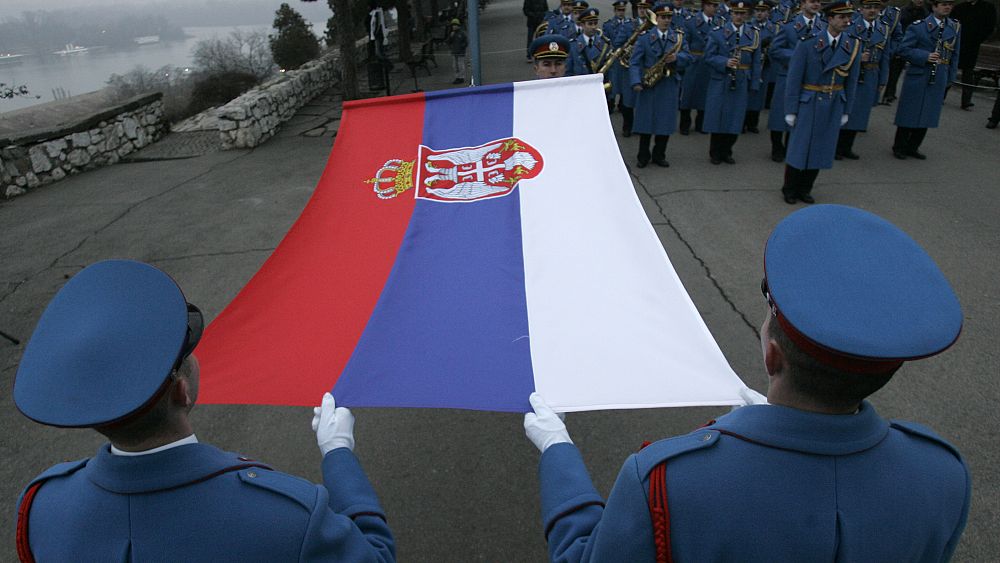Serbia celebrates its national holiday on February 15, also known as Statehood Day. The two-day holiday commemorates the beginning of the 1804 uprising against the Ottoman Empire that grew into the Serbian Revolution. February 15 is also the date when the first Serbian constitution was adopted in 1835, a progressive treaty protecting human rights known as the “Sretenje Constitution”.
Statehood Day, celebrated as one of the most culturally and historically significant days in Serbia, was recognized as a national holiday for the first time in 2001.
First Serbian Uprising
From a geographical and geostrategic point of view, Serbia has been at a “geopolitical crossroads” since the earliest times, a gateway to all European points of the compass.
It stood in the way of the expansion of the powerful Ottoman Empire in Europe in the 14th century, and after a series of heavy defeats in battles, the Turks finally conquered all northern Serbian territory in 1459 when Smederevo fell into their hands.
During this period, the Turks persecuted the Serbian aristocracy, determined to physically exterminate the social elite. Since the Ottoman Empire was an Islamic theocratic state, Christian Serbs lived as virtual servants – abused, humiliated and exploited.
Consequently, they gradually abandoned the developed and urban centers where mining, handicrafts and trade were practiced, and retreated to more hostile mountainous areas, raising livestock and subsisting on modest agriculture.
The centuries of Turkish rule saw frequent unrest and the Serbs were important allies of the European powers, especially Austria, in the resistance.
Many of the uprisings were bloody.
A particularly violent event known as the Slaughter of the Knezes (the nobles) was the turning point. Fearing that the sultan would use the Serbs to drive them out, they decided to execute the leaders. A total of 72 noble Serbs were murdered and their heads displayed in public.
The event sparked the First Serbian Uprising aimed at ending centuries of Ottoman occupation.
Originally a local revolt against renegade janissaries, elite infantry units brought to power by a coup, it evolved into a war of independence (the Serbian Revolution).
As a result of the uprisings and subsequent wars against the Ottoman Empire, the independent Principality of Serbia was formed in 1878 and recognized internationally.
1835 Constitution of Serbia
On February 15, Serbia will also mark another important anniversary – the day of the adoption of the first democratic Constitutionat that time one of the most liberal in Europe.
The “Sretenje Constitution” (Candlemas Constitution) known today divided power into the legislative, executive and judiciary, which is still the benchmark for democracy and constitutionality today.
The constitution was drafted by Dimitrije Davidović, Prime Minister of Serbia, Minister of Education and Chief Secretary of the Cabinet of Prince Miloš Obrenović I and adopted in the city of Kragujevac in 1835.
This noble writer, philosopher, journalist, publisher, historian, diplomat and founder of modern Serbian journalism and publishing based it on the French constitution of 1791 and the constitutional acts of 1814 and 1830 and the Belgian constitution of 1831.
The Sretenje Constitution established democracy in Serbia and created the necessary foundations to address the important issues of Serbian society at the time, such as national emancipation, the dissolution of feudal institutions, and human rights.
A special paragraph of the constitution is dedicated to the personal rights of citizens: inviolability of personal freedom, inviolability of property, freedom of religion. She paid particular attention to equality and the right to vote.
The Constitution also contains provisions relating to a number of procedural rights such as ne bis ne idem, nulum crimen sine lege(literally “not twice about the same”) Right to appeal to a higher power and prohibition of retroactivity.
However, the adoption of the Sretenje constitution did not gain approval abroad.
The Greatest European Empires of Russia, Turkey, Austria, Prussia, like many smaller countries, had no constitutions at that time and did not adopt them in time. Therefore they all opposed it and agreed that the constitution was revolutionary and contrary to their feudal order.
The question was even asked what use the ministries in Serbia would have, including the Ministry of Foreign Affairs, and what the national flag would be for.
They called for her dismissal on the grounds that “the constitution should be changed because it introduces French seedlings into a Turkish forest”.
The constitution lasted only 14 days (55 days) and was repealed on April 11, 1835.
Candlemas and Groundhog Day
Orthodox Christians in Serbia also celebrate Candlemas – Sretenje – on February 15, also known as the Feast of the Presentation of Jesus Christ.
According to the Julian calendar, it is the 40th day after Christmas (according to the Gregorian calendar, it is February 2nd).
There is a belief that winter and summer meet at Candlemas.
When a sunny day breaks on Sretenje and the bears return to hibernation for fear of their own shadow, it is believed that winter will last another six weeks.
Sound familiar? A similar custom exists where Candlemas is celebrated on February 2nd.
Badgers were part of it in German lands, and from the German immigrants in Pennsylvania came the Groundhog Day in the city of Punxsutawney.

